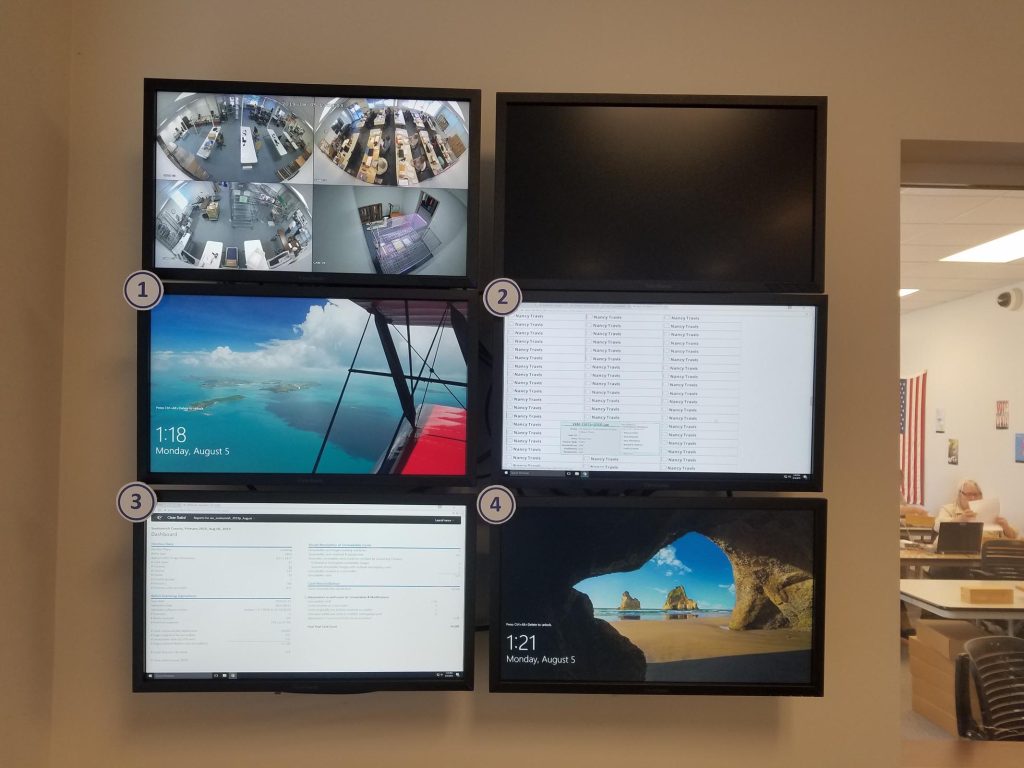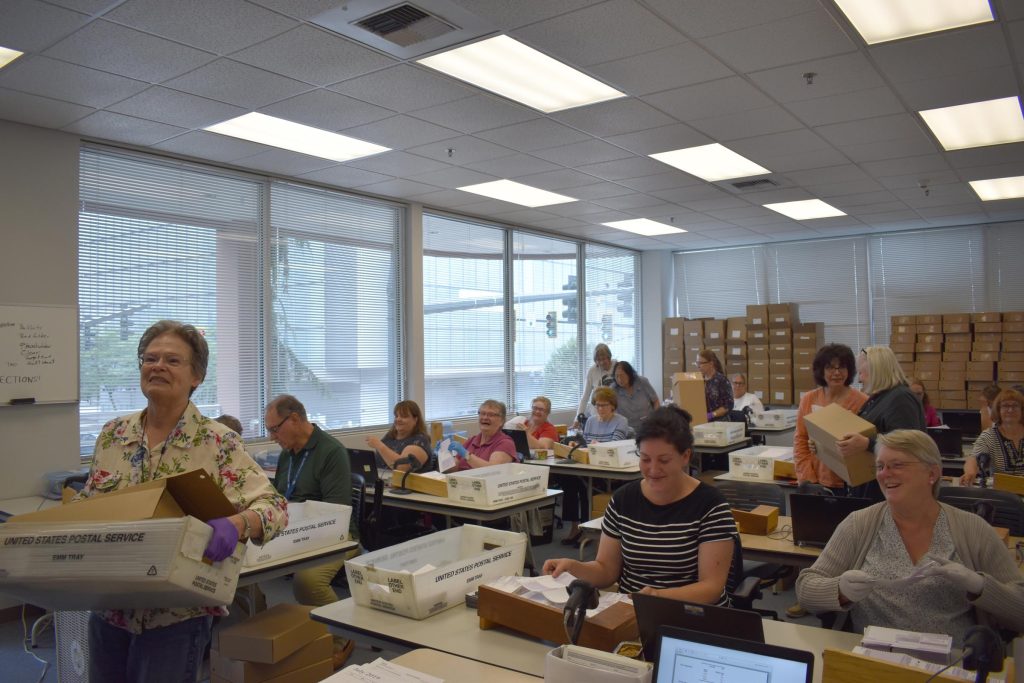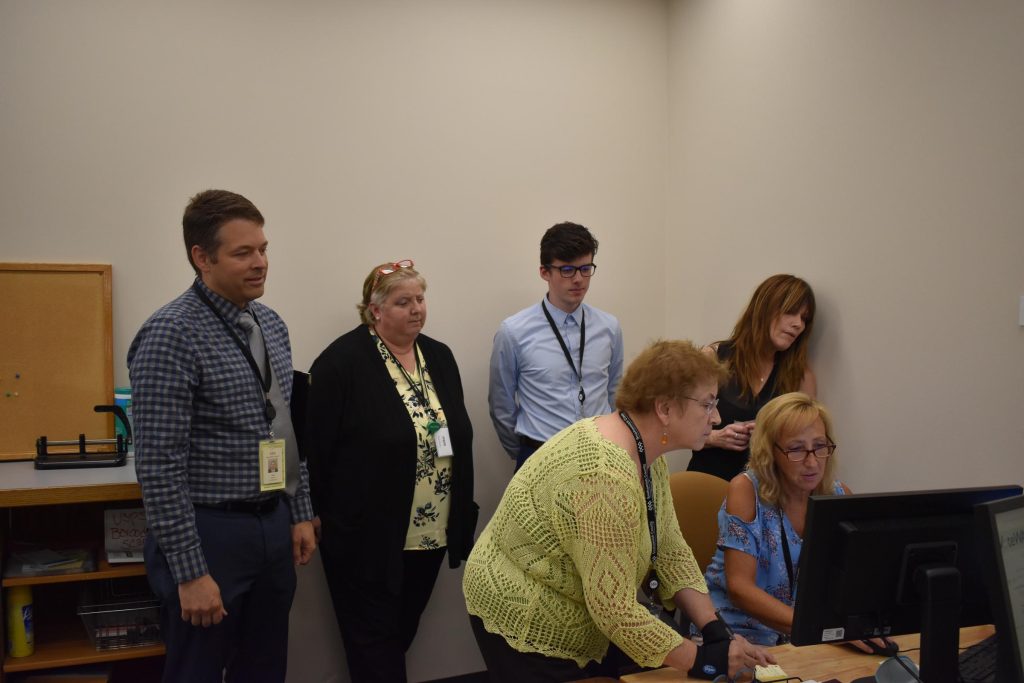Editor’s Note: This article is a repost that was originally posted August 6, 2019. Garth Fell is now the Snohomish County Auditor.
Ballot counting is a fairly complicated and extremely detail-oriented process that you may not actively think about. Because of this, you may not know: How exactly is your ballot counted?
Stepping back a bit, voters are mailed their ballots 18 days prior to Election Day; once received, individuals may vote at their convenience. County employees pick up all the ballots placed at ballot drop-boxes, and the United States Postal Service picks up the ballots that are placed in blue boxes. All envelopes are sent to Seattle for sorting, and then to the county office in Everett.
“About half of the ballots are returned before election week, and the other half are returned election week and Election Day,” said Garth Fell, Elections Manager. The ballot drop boxes are closed at 8 P.M. on Election Day, so voters need to be mindful to get their ballots in by that time. Additionally, voters should be mindful of the last pickup time for all USPS blue boxes.

The ballot counting process begins with county employees checking signatures on the envelopes. All the people in this process have gone through training with the Washington State Patrol in signature-matching. If there is an issue with the signature, including a mismatch or even a missing signature, the voter is contacted and has until the day before the election certifies to resolve the issue. After a batch of envelopes have been checked for signatures, the batch is securely bundled and taken across the street in a truck. It is there that the rest of the process will take place.
All the envelopes go through a high-speed scanner to confirm the number of ballots in the batch and to scan the voter ID barcode so each voter gets marked that they voted. After being scanned, envelopes are sliced open by a large machine before going to the teams that remove the ballots from the envelopes.

In teams of two, processing teams take the secrecy sleeves out of the signature envelope. This cuts the tie of the voter to their ballot, so from this point forward, each ballot is completely anonymous. After all signature envelopes are empty and set aside, then the teams remove the ballots from the secrecy sleeves.
The next step is the visual inspection of each ballot. Workers need to make sure that the marks on the ballot will be picked up by the scanning system. They count the number of ballots, and before the ballots go to the scanning process, another worker will come by and double-check the ballot counting numbers to confirm once more.
The ballot-scanning process is actually done on
consumer-grade scanners, but each connected laptop has special software installed.
Additionally, none of the scanners or laptops are connected to the internet;
the laptops are connected to the server in the room. The server is locked
behind a chain-link fence that requires two employees to unlock. No one
individual can enter.

All the digital scans are sent to adjudication systems. All of these systems require passwords, and only a limited amount of staff have access to the building. The building is also equipped with multiple security cameras and an alarm system that is separate from the county’s alarm system.
At the adjudication systems, staff review images that the system couldn’t read. This can be many things including a voter filling in two bubbles, crossing a choice out, not filling in anything or even something like the bottom of the ballot being torn.
Additionally, Fell explained, state law says that voter intent is what truly matters. This means if someone consistently put an “x” by each candidate they wanted to vote for instead of filling in the bubble, their vote will still count. Staff can fix things like this so the vote is still counted, even though the machine wouldn’t read it.
All the results are kept on the server, which, like almost everything else, is not connected to the internet. Backups of the server are made each night in case anything happens and are taken to confidential locations.
Only one computer is connected to the internet, since that is how election results are uploaded. The results are copied from the served to a USB drive, and the USB drive is connected to the computer. After the results are updated, the USB drive is wiped with a Department of Defense level wiping system before it can be used on the server again. This is to prevent any potential viruses.
Staff continue to count ballots until all the ballots are counted, even if a candidate concedes. Primary Election results are certified 14 days after the election where General Election results are certified 21 days after the election. This period is to make sure that the ballot counting includes every ballot sent in, and all signature issues are resolved.

The ballots are then sealed and stored in the building. After the certification period, ballots are kept for the required retention period; this duration varies, but for federal elections it is 22 months. During this period, ballots are stored in the county building in a secure location. Only election staff have access. After the required retention period, the ballots are confidentially destroyed. Staff can only go back into the boxes if it has been required by a court order. Digital copies are kept for the same amount of time as physical copies before being wiped from the system.
“I love my job,” said one of the staff. “We get to do everything, all the steps. I’ve done everything but scanning, even going out to the ballot boxes to get the ballots. I’m doing my civic duty by being a part of this process and making sure it’s done well.”
“My favorite part of the job is knowing that we are providing a valued community service,” said Fell. “We’re giving people an opportunity to have a voice in their government, to determine who their leaders are going to be, to have a voice on issues that will impact their taxes, or services they see locally.”
“Over the last 12 years in Snohomish County, and in elections in general, I’ve seen an increased awareness in the importance of the process,” Fell continued. “There is an increased desire in making sure the process is not only secure and accountable, but accessible. There have been many improvements in same-day registration, security methods and there is continued discussion in different audit methods.”
For more information, including a video of the ballot counting process, go to snohomishcountywa.gov/3969/Voters.
Author: Lynnwood Times Staff










One Response